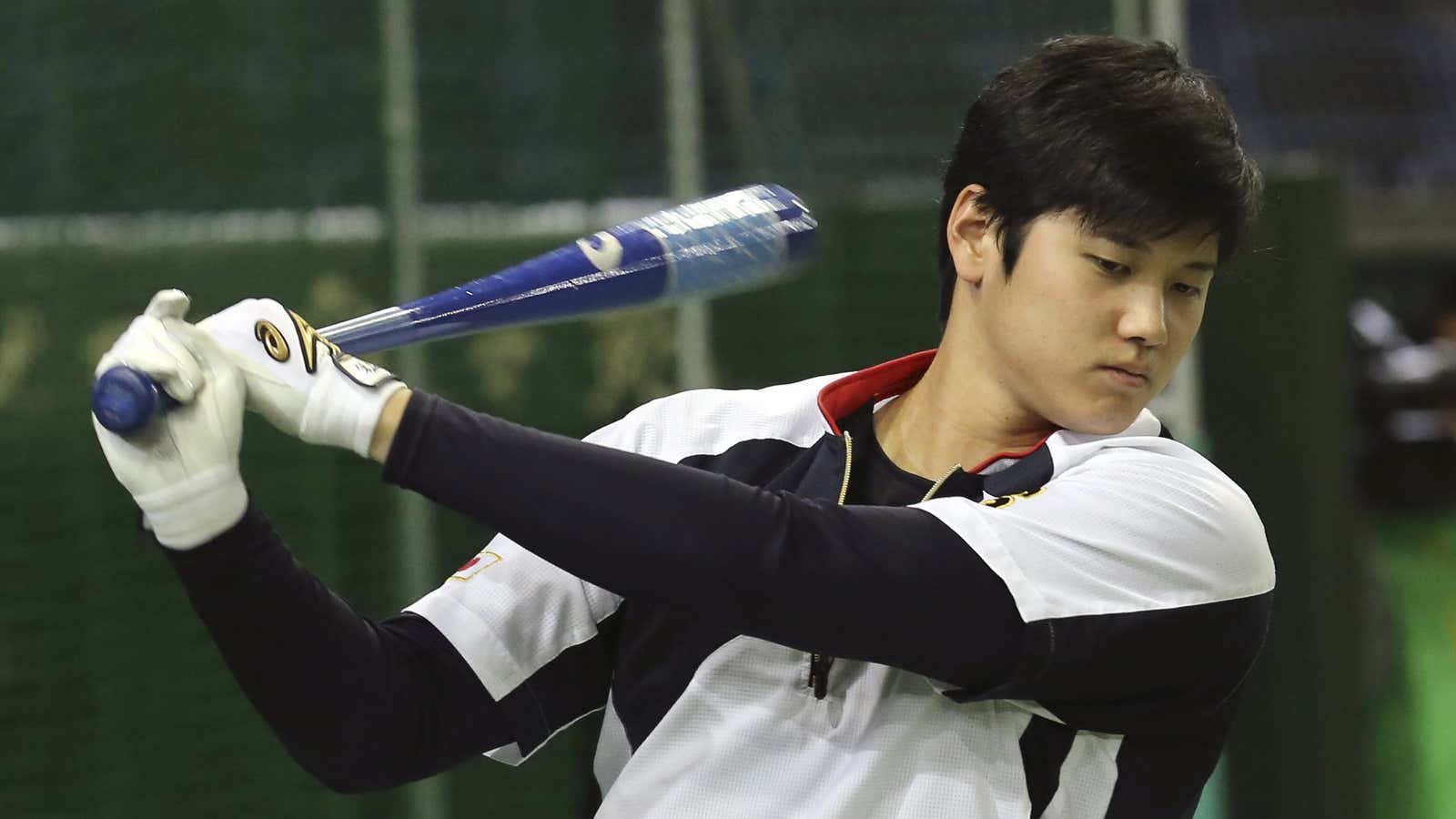While the Major League Baseball season begins today in St. Petersburg, Florida, one of the sport’s most intriguing prospects in decades is half a world away.
Shohei Otani, a player with such an unusual set of skills that he invites comparisons to Babe Ruth, plays for the Nippon Ham Fighters in Japan. While the path from Japanese baseball to the US major leagues is by now well traveled, Otani will be stuck in Sapporo for the 2017 season, a victim of new rules that, in essence, penalize him for being too good at too young an age.
Otani, just 22, is already one of the most complete batters in Japanese baseball. If you use a modern statistic that measures power with his ability to get on base (OPS), last year he was the best hitter in Japan. But Otani isn’t just a hitter. He’s a starting pitcher as well—and as a pitcher, he’s also the best in the league.
His earned run average (runs allowed per nine innings) was the lowest among starters, and his strikeouts per nine innings was the highest. His fastball reaches 101 mph (163 km/h), which would make him among the hardest throwers in American baseball. For his efforts, he was named the most valuable player in his league.
Modern baseball is one of specialization. Players have increasingly narrowly tailored roles, like pitching just the ninth inning with a lead, or waiting all game to face one left-handed batter. While pitchers are required to bat in the National League—Major League Baseball, bizarrely, still has two sets of rules for its two leagues—almost nothing is expected of them. Very few pitchers are competent at swinging a bat; most just don’t want to be embarrassed.
To find the last American players truly great at both, you have go back to George “Babe” Ruth.
Ruth is history’s most famous player because of his prodigious home runs, and larger-than-life personality, but he began his career as a pitcher. As a 21-year old in 1916, pitching for the Boston Red Sox, he led the American League in ERA, and set a record for throwing 29 consecutive scoreless innings in the 1916 and 1918 World Series. After 1919, he was traded to the New York Yankees, where he became a full-time hitter. Ruth pitched in only four more games over the rest of his career.
Unlike Ruth, Otani is determined to both pitch and hit, and his ability means major league teams will want him to when he reaches the US. When that will happens, however, is another question.
Because Otani is under 25 with less than six years of professional experience, if he wants to play in the US, he’ll be subject to a salary cap that baseball imposes on international signings. The most he could make in the US next season is probably around $6 million—a lot of money, but far less than he’d command on the open market. To really cash in on a contract that could be worth as much as $300 million, he’d have to wait until after 2019.
Further complicating matters is his contract with the Fighters (the team is sponsored by Nippon Ham, a food company). The team will receive $20 million from any American major-league team that signs Otani, and they may want to collect sooner than later.
For his part, Otani says he’s open to moving after this year, but he’s evasive about his plans. “There are no clear criteria (as to when to move),” he told the Japan Times. “I could have that desire to move (over the course of) next year and we just talked about how things will go in those moments.”
In the meantime, baseball fans outside Japan can follow his exploits with the Nippon Ham Fighters online.
